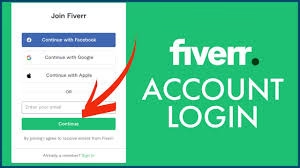Google Rank Ever wonder why some websites show up at the top of Google search results while others are buried on page five? That’s the magic of Google Rank—a powerful system that determines where your website stands in the vast digital jungle. Whether you’re a blogger, business owner, or digital marketer, understanding how Google ranks websites can give you a huge advantage.
In this comprehensive guide, we’ll break down exactly what Google Rank is, how it works, and how you can climb to the top of the search results. Let’s dive in!
What is Google Rank?
Google Rank refers to the position of a website or web page in Google’s search engine results pages (SERPs). The higher your rank, the more visible your content is to users searching for relevant keywords.
Being on the first page of Google isn’t just nice—it’s essential. According to studies, over 90% of users never go beyond the first page. If your content ranks #1, you’ve struck SEO gold.
Why Google Ranking Matters
Think of your website as a store in a busy city. Google Rank is like the street your store is on. Rank high, and you’re on the main avenue with tons of foot traffic. Rank low, and you’re down a dark alley no one visits.
High Google rankings mean:
- More organic traffic
- More leads and sales
- Increased authority and credibility
- Better brand awareness
How Google Ranking Works
Google’s Search Algorithm Overview
Google’s algorithm is a complex beast made up of hundreds of ranking factors. But at a high level, here’s what happens:
- Crawling – Googlebots scan the internet for new content.
- Indexing – That content is analyzed and added to Google’s database.
- Ranking – Google displays results based on relevance, authority, and user experience.
Ranking Factors Explained
While Google never shares all its secrets, SEO experts have identified key ranking factors. These are signals Google uses to decide where your page belongs.
Core Ranking Signals in 2025
Content Quality
Google loves fresh, useful, and well-structured content. Your writing should solve problems, answer questions, and provide real value.
Backlinks and Authority
Backlinks are like online votes of confidence. If authoritative websites link to your content, Google assumes it’s trustworthy.
User Experience (UX)
This includes things like bounce rate, dwell time, and site navigation. A clean, fast, and intuitive site keeps visitors happy—and Google notices.
Mobile-Friendliness and Page Speed
Most searches happen on mobile. If your site isn’t mobile-optimized and lightning fast, you’re already behind.
E-E-A-T (Experience, Expertise, Authority, Trust)
Introduced in Google’s quality rater guidelines, E-E-A-T is all about showing you’re a credible source. This is especially important for finance, health, and legal websites.
Top 10 Factors That Influence Google Rank
1. High-Quality Content
Your content needs to be informative, original, and engaging. Avoid fluff. Solve problems.
2. Relevant Keywords
Target keywords that match search intent. Use tools like Ahrefs, SEMrush, or Google Keyword Planner to find what people are searching for.
3. Backlink Profile
The more high-quality backlinks you earn, the higher your authority.
4. Mobile Optimization
If your site isn’t mobile-friendly, Google will penalize you. Use responsive design and test your site on different devices.
5. Page Speed
A slow-loading site kills user experience and rankings. Use tools like Google PageSpeed Insights to improve load times.
6. Technical SEO
This includes things like proper URL structure, schema markup, sitemaps, and secure HTTPS connections.
7. User Engagement Metrics
Google tracks how users interact with your site. High bounce rates and low dwell times are red flags.
8. Schema Markup
Structured data helps Google understand your content. Use it for things like product listings, reviews, and FAQs.
9. Domain Authority
This is a measure of your site’s overall credibility. The older and more established your domain, the better.
10. Secure Website (HTTPS)
Security matters. Google gives preference to secure websites using HTTPS.
Understanding Search Intent
Types of Search Intent
- Informational – The user wants to learn something (“What is Google Rank?”).
- Navigational – The user is looking for a specific website or page (“Facebook login”).
- Transactional – The user is ready to make a purchase (“Buy SEO tools”).
Matching Content with Intent
Your content should align with what the user wants. For example, if someone searches for “best coffee machines,” they probably want reviews and comparisons—not a blog on coffee history.
How to Improve Your Google Rank
On-Page Optimization Techniques
Title Tags and Meta Descriptions
These are your first impression in the SERPs. Make them compelling, keyword-rich, and under the character limit.
Header Tags and Structure
Use H1, H2, H3, etc., to organize your content and make it easy to scan.
Internal Linking
Link to other relevant pages on your site to boost SEO and help users navigate.
Keyword Placement
Use your target keywords naturally in headings, paragraphs, and image alt texts.
Off-Page Strategies
Link Building
Guest posts, outreach, broken link building, and digital PR are great ways to earn backlinks.
Social Signals
While not a direct ranking factor, social engagement can lead to more visibility and backlinks.
Influencer Outreach
Collaborate with influencers and bloggers in your niche to get quality mentions and traffic.
Technical SEO
XML Sitemaps
Helps Google index your pages faster and more efficiently.
Robots.txt
Directs search engine crawlers on what to index or ignore.
Canonical URLs
Avoid duplicate content issues by specifying preferred URLs.
Core Web Vitals
Focus on Largest Contentful Paint (LCP), First Input Delay (FID), and Cumulative Layout Shift (CLS).
Tools to Track and Improve Google Rank
Google Search Console
Free and essential. See which keywords you rank for, get crawl stats, and track errors.
Google Analytics
Monitor user behavior, bounce rates, conversions, and traffic sources.
Ahrefs / SEMrush / Moz
These tools provide in-depth keyword data, backlink analysis, and rank tracking.
Surfer SEO and Page Optimizers
Great for on-page content optimization based on competitors and SERP data.
Common Google Rank Mistakes to Avoid
Keyword Stuffing
Cramming keywords everywhere is outdated and penalized.
Ignoring Mobile Optimization
Your site must look and function flawlessly on mobile devices.
Thin Content
Google rewards depth. Avoid short, shallow pages that don’t offer value.
Not Updating Old Content
Refreshing old posts with new data and keywords can boost your rankings big time.
How Long Does It Take to Rank on Google?
Factors Affecting Ranking Time
- Niche competitiveness
- Domain authority
- Content quality
- Backlink profile
- Frequency of updates
New Sites vs. Established Domains
New sites might take 3–6 months to see traction. Established domains can rank faster if the content aligns with user intent.
Case Studies of Google Ranking Success
Local Business Growth via SEO
A small landscaping business optimized their Google My Business listing, built citations, and added local content. Within 4 months, they ranked in the top 3 for local search terms and doubled their leads.
Blog Post Ranking for Competitive Keyword
A fitness blogger created a 4,000-word guide on “intermittent fasting.” They earned backlinks from 30+ sites and reached page 1 in three months.
E-Commerce Store Ranking #1 in Niche
An online store selling eco-friendly products invested in content marketing and link building. Their category pages now rank #1 for multiple product keywords.
Future of Google Rank
AI and Google Search
Google’s algorithm is becoming more human-like. AI understands context, nuance, and user intent better than ever.
Voice Search and Conversational Queries
People are using voice assistants like Siri and Google Assistant more than ever. Optimize for natural language and FAQs.
Visual and Video Content Ranking
Google is prioritizing videos and images in search. Use YouTube, infographics, and high-quality visuals to stand out.
Conclusion
Climbing the Google ranks is part science, part art. It requires strategic content, technical mastery, and consistent effort. But with the right approach, anyone can rise through the search results—yes, even you.
Focus on value, not just keywords. Keep your audience in mind. Build trust. And most importantly—never stop optimizing.
FAQs
What is a good Google Rank?
Ranking on the first page (top 10 results) is good. Ranking in the top 3? That’s excellent.
Can I rank without backlinks?
It’s possible, especially for low-competition keywords, but backlinks significantly increase your chances.
Is paid advertising part of Google Rank?
No. Paid ads are separate from organic rankings and do not directly influence SEO.
What are Google’s core updates?
Core updates are broad changes to Google’s algorithm that can impact rankings across the web. They happen several times a year.
How often should I update my content to maintain rank?
Aim to review and update key content every 3–6 months, especially if the topic evolves or new competitors enter the scene.






